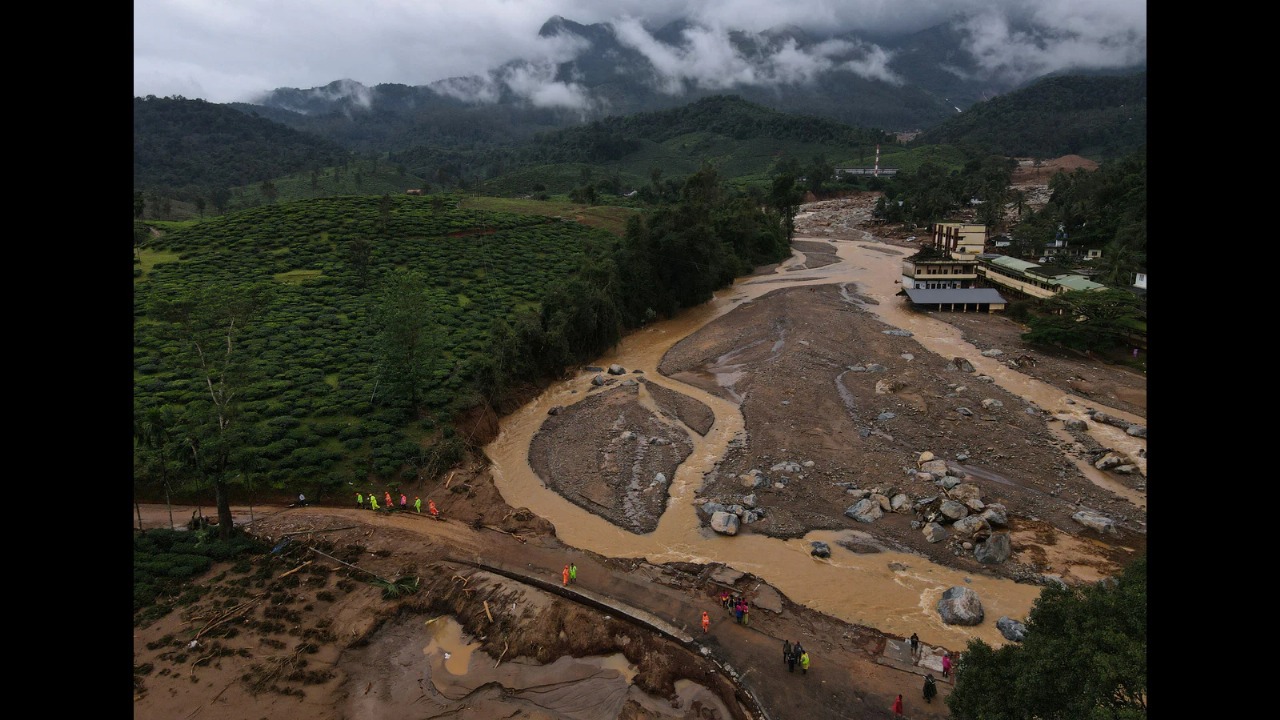India’s urban and rural landscapes are undergoing dramatic transformations—not through construction, but through destruction. Landslides, flash floods, and extreme weather events are remapping the country’s geography, one city at a time. From the snowless hills of Himachal Pradesh to the submerged streets of Mumbai and the eroding coasts of Tamil Nadu, climate-linked disasters are no longer seasonal anomalies—they are structural forces reshaping how India lives, builds, and plans.
This newsletter explores the shifting terrain, the cities most affected, and the urgent need for adaptive infrastructure and policy reform.
Key Highlights From 2025’s Climate Disruptions
- January and February recorded the warmest winter in decades, disrupting snowfall patterns in hill states
- Chamoli district in Uttarakhand saw a deadly snowstorm that killed 8 and displaced 47 workers
- Southern states like Maharashtra, Telangana, and Andhra Pradesh experienced heatwaves as early as February
- Rainfall deficits of up to 99 percent in parts of Himachal Pradesh and Uttarakhand led to dry spells followed by sudden snow dumps
- Coastal erosion intensified in Tamil Nadu and Odisha, with rising sea levels threatening low-lying towns
- Flash floods in Mumbai and Bengaluru overwhelmed drainage systems, causing urban paralysis
Northern Hills: From Snowless Winters to Sudden Avalanches
The Himalayan belt, traditionally known for its predictable winter snowfall, has seen erratic patterns in 2025. January was the second warmest on record, and February the warmest ever. Snowfall was absent in many regions until a sudden storm on February 29 blanketed the hills, triggering landslides and avalanches.
Chamoli district in Uttarakhand bore the brunt, where a snowstorm swept away Border Roads Organisation workers. The incident highlighted the vulnerability of infrastructure projects in high-altitude zones and the need for real-time weather monitoring.
Southern Heatwaves and Urban Floods
While the north froze unexpectedly, the south boiled. The Konkan coast recorded its first heatwave on February 25, with temperatures exceeding 40 degrees Celsius in March across Vidarbha, Telangana, and Odisha. These early heatwaves disrupted crop cycles, strained water resources, and increased fire risks in forested areas.
Simultaneously, cities like Mumbai and Bengaluru faced flash floods due to unseasonal rainfall and poor drainage. In Mumbai, waterlogging halted suburban rail services, while Bengaluru’s tech corridors were submerged, affecting thousands of commuters.
Coastal Erosion and Rising Seas
India’s eastern and western coasts are witnessing accelerated erosion. In Tamil Nadu, villages near Nagapattinam have lost up to 50 meters of shoreline in just two years. Odisha’s Chilika Lake region is also shrinking due to saline intrusion and tidal surges.
These changes are not just environmental—they are socio-economic. Fishing communities are being displaced, tourism infrastructure is under threat, and agricultural lands are turning saline, reducing productivity.
Urban Planning Under Pressure
India’s cities are struggling to keep pace with climate volatility. Traditional urban planning models based on historical weather data are proving inadequate. Key challenges include:
- Outdated drainage systems unable to handle flash floods
- Construction on floodplains and hill slopes increasing disaster risk
- Lack of green cover and permeable surfaces in urban areas
- Inadequate early warning systems and disaster response infrastructure
Experts are calling for climate-resilient urban design, including elevated roads, rainwater harvesting, and decentralized energy systems.
Policy Response and What Needs to Change
While the government has launched initiatives like the National Adaptation Fund for Climate Change and Smart Cities Mission, implementation remains patchy. There is an urgent need to:
- Integrate climate risk into city master plans
- Enforce building codes in vulnerable zones
- Invest in predictive weather technology and local forecasting
- Promote community-based disaster preparedness
- Restore natural buffers like wetlands, mangroves, and forest belts
Conclusion: A Nation Redrawing Its Boundaries
India’s geography is being redrawn—not by cartographers, but by climate. Landslides, floods, and heatwaves are reshaping cities, displacing communities, and challenging long-held assumptions about where and how we live. The shifting landscape demands a new kind of planning—one that is adaptive, inclusive, and rooted in ecological wisdom.
Sources: India Water Portal, Hindustan Times, MSN India, Down To Earth, India Meteorological Department, The Weather Channel India
